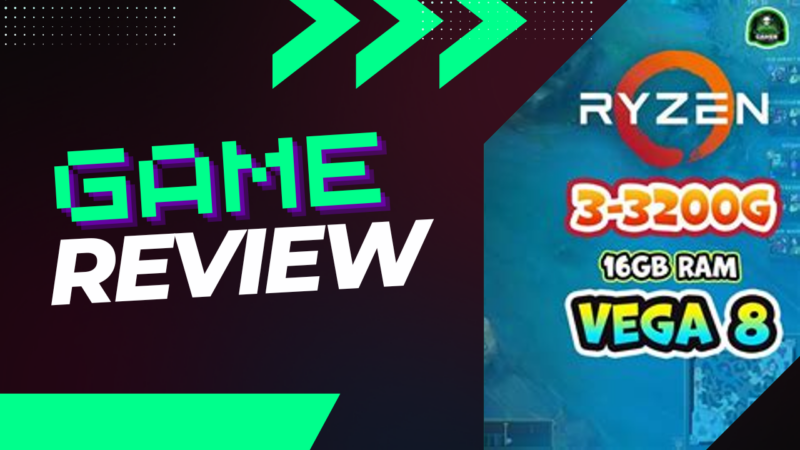How much RAM is enough to keep your gaming experience smooth? In a digital world where quick reflexes and precision can make or break your victory, the question of RAM, or random access memory, looms large. With popular games like League of Legends requiring a mere 4GB for basic play, it’s easy to overlook the potential benefits of upgrading. However, for those looking to unleash the full capabilities of their PC, 16GB may be the sweet spot that combines performance and capability. Join us as we explore the intricacies of RAM and its impact on your gaming prowess, ensuring your adventures remain as thrilling as they are seamless.
In the realm of PC gaming, popular titles like Fortnite and League of Legends generally demand at least 4GB of memory. On the other hand, more complex and graphics-intensive games such as A Plague Tale: Requiem and Star Wars: Jedi Survivor often require a minimum of 16GB of RAM.
Having sufficient RAM (random access memory) is crucial for gamers striving to achieve the most seamless and enjoyable gaming experience possible.
Encountering glitches or lag during gameplay can be a sign that your system requires additional RAM. But how much more do you truly need?
Understanding the Role of RAM in Gaming
RAM, or memory, acts as a temporary vault for game data that your system processes, in contrast to your storage device—be it a hard disk drive (HDD) or solid-state drive (SSD)—which keeps your data more permanently (or until you decide to erase it).
With adequate RAM, your system can swiftly access the game data currently in use. The greater the amount of RAM available, the more gameplay data your system can hold, which can lead to enhanced response times, quicker loading speeds, clearer graphics, and reduced lag during play.
Identifying Your Gaming Style
Your inquiry about “how much RAM is required for gaming?” largely hinges on the type of games you engage with.
As previously mentioned, numerous PC games like Fortnite and League of Legends generally require about 4GB of RAM.
In contrast, more intricate and graphically demanding games such as A Plague Tale: Requiem and Star Wars: Jedi Survivor typically necessitate a minimum of 16GB.
Understanding PC Gaming System Requirements
Developers usually provide the minimum specifications essential for every game release. If your PC or laptop fails to meet these basic requirements, you may encounter performance issues, which could range from lagging graphics to overheating and battery life reduction.
When searching for games, check the minimum system requirements on the official game’s website or a gaming platform like Steam, then cross-reference them with your computer’s specifications to ensure you meet the necessary criteria.
As part of our review of the most visually stunning games, we explored the specifications for CPU, RAM, GPU, and storage of various graphics-intensive gaming titles.
More RAM generally translates to improved graphics and a smoother gameplay experience, with the latter often quantified as frames per second (FPS). The higher the FPS, the more fluid your gaming experience will feel.
How Much RAM Is Ideal for Gaming?
Is 8GB Sufficient for Gameplay?
If your PC is equipped with 8GB of memory, this is a solid foundation for most casual gamers. With 8GB, you should be able to play the majority of games without significant issues; however, you may not experience the highest quality settings or might need to close background applications to maintain performance.
Is 16GB Adequate for Gaming?
For most gaming scenarios, 16GB of RAM is widely recommended for optimal, high-performance gameplay. This level of RAM will help you steer clear of lag and stuttering, allowing you to run other applications simultaneously without compromising your gaming experience.
Is 32GB Necessary for Gaming?
For those seeking extreme gaming performance, opting for 32GB of RAM is advisable. With 32GB, you can run the latest games at top resolutions with minimal drops in quality. Additionally, this amount of RAM will enable you to run various applications in the background, including live streaming software, editing tools, and your preferred web browser. Even though 32GB RAM is generally the priciest option, it offers some degree of future-proofing as newer games demand more memory.
Other Factors Affecting Gaming Performance
Generations of RAM and Their Compatibility
RAM has evolved over generations, with the most common types being DDR3, DDR4, and DDR5. Each generation showcases differences in speed, performance, and compatibility.
If you’re assembling a new computer, you have the liberty to choose your RAM generation based on the other components installed. However, whether you’re building or upgrading an existing PC, selecting RAM that’s compatible with your motherboard is crucial.
To determine the compatibility of RAM with your system, consider using tools like the Crucial System Selector or System Scanner.
Once you’ve chosen the right RAM based on your requirements, the installation process is straightforward and can often be completed by yourself.
Other Hardware Considerations for Gaming
RAM is just one of the several components to evaluate when considering gaming hardware.
Most game developers also recommend specifications for other system components, including the operating system, CPU, SSD capacity, audio devices, and graphics cards.









